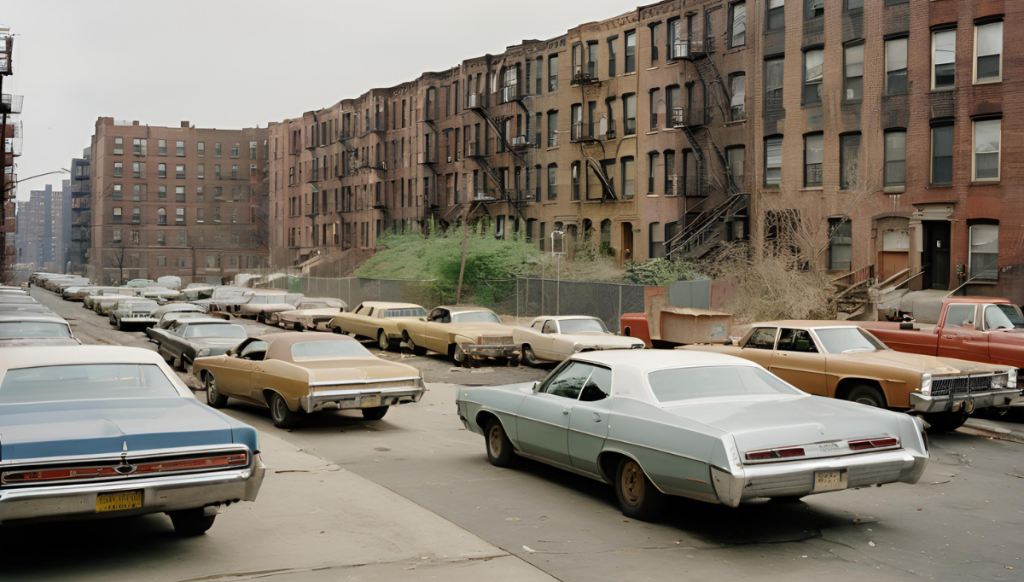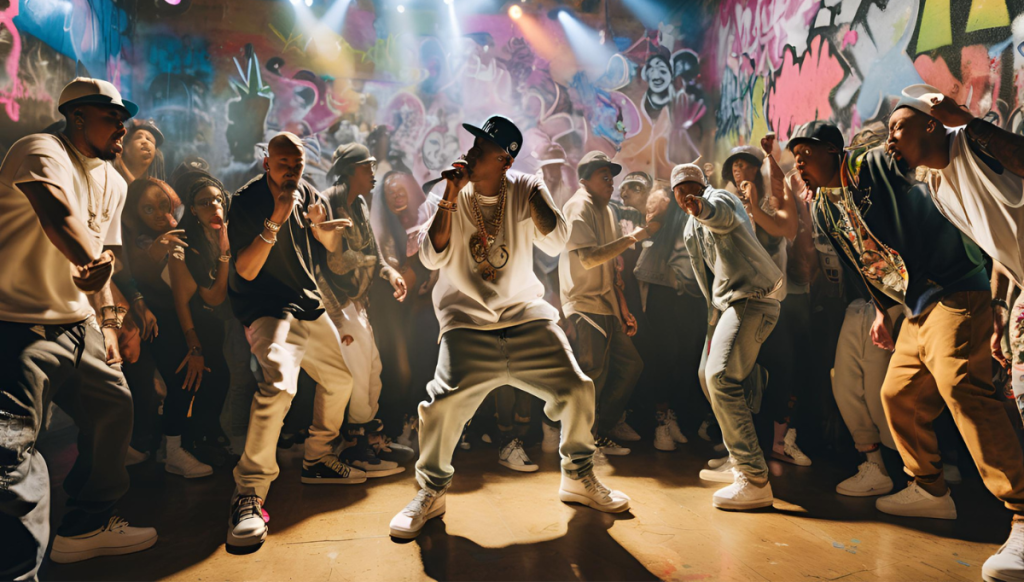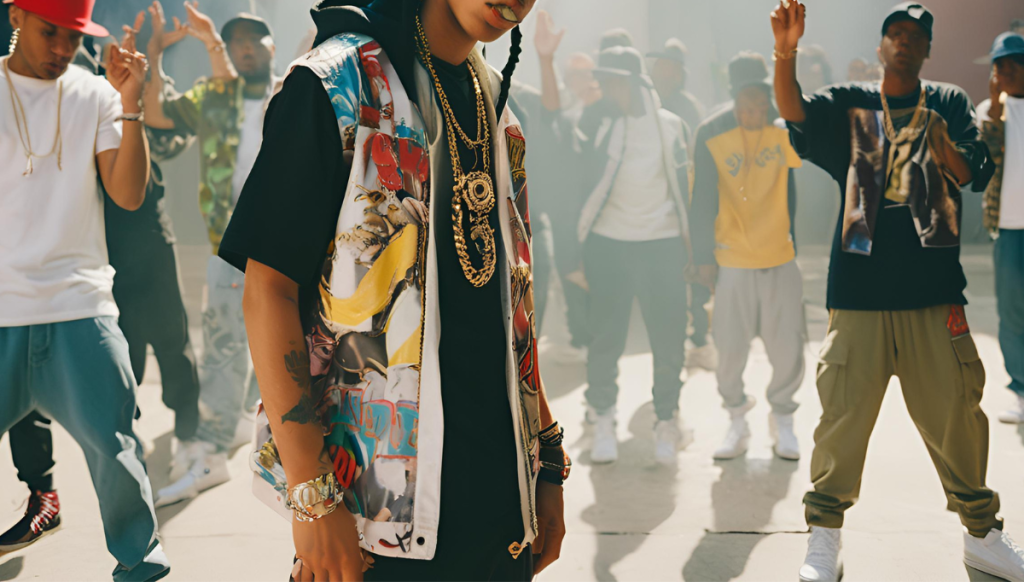Rap vs. Hip Hop: Understanding the Distinctions and Interconnections
In the vast and vibrant landscape of music, few genres have had as profound an impact as rap and hip hop. Often used interchangeably, these terms encapsulate a rich tapestry of cultural, musical, and artistic elements that have shaped global music trends for decades. This article delves into the nuanced differences and interconnectedness between rap and hip hop, exploring their origins, evolution, and significance in contemporary society.

In the vast and vibrant landscape of music, few genres have had as profound an impact as rap and hip hop. Although often used interchangeably, these terms represent distinct but interconnected elements of a cultural movement that has shaped global music trends for decades.
Rap, as a musical genre, emphasizes lyrical delivery and rhythm, while hip hop is a cultural movement that includes music, dance, fashion, and art. By understanding the differences and connections between these two terms, we gain a deeper appreciation of their contributions to contemporary culture.
In this article, we’ll explore the origins of hip hop in the Bronx, the evolution of rap as a powerful form of expression, and their combined impact on global music and culture. From the pioneers of the Golden Age to the rise of subgenres like trap music and conscious rap, we’ll unpack how rap and hip hop continue to influence society. Learn more about the history of hip hop on Britannica.
Whether you’re a long-time fan or a curious listener, understanding these nuances helps paint a clearer picture of how these genres became cultural phenomena. Explore hip hop culture through the Smithsonian Institution.
Origins and Definitions
Hip Hop: A Cultural Movement

Hip hop originated in the early 1970s in the Bronx, New York City, as a cultural movement encompassing four key elements: DJing, MCing (rapping), breakdancing, and graffiti art. It was a form of expression born out of socioeconomic challenges, providing a voice for marginalized communities. The movement emphasized creativity, resilience, and community, setting the foundation for what would become a global phenomenon.
Rap: The Musical Component
Rap, on the other hand, is a musical style characterized by rhythmic and rhyming speech. While it is a fundamental element of hip hop, rap can exist independently as a genre. It focuses on lyrical delivery, flow, and wordplay, often addressing a wide range of themes from personal experiences to social and political issues.
Evolution of Hip Hop and Rap
The Golden Age of Hip Hop (1980s-1990s)

The 1980s to early 1990s are often referred to as the “Golden Age” of hip hop. During this period, the genre saw significant diversification in styles and themes. Pioneering artists like Run-D.M.C., Public Enemy, and N.W.A. pushed the boundaries, introducing new sounds and addressing pressing social issues such as racism, poverty, and police brutality.
Mainstream Success and Commercialization (2000s-Present)
In the 2000s, hip hop and rap transitioned into mainstream music, achieving unprecedented commercial success. Artists like Jay-Z, Eminem, and Kanye West became global icons, blending hip hop with other genres and expanding its influence. This era also saw the rise of subgenres like trap, gangsta rap, and conscious rap, each bringing unique perspectives, beats to rap on and sounds.
Distinguishing Rap from Hip Hop
Scope and Components
Hip Hop is an all-encompassing cultural movement that includes not just music, but also dance, art, and fashion. It represents a lifestyle and a form of social expression. Rap, conversely, is primarily a musical technique within hip hop, focusing on lyrical delivery and rhythm.
Artistic Expression

While hip hop incorporates various forms of artistic expression like breakdancing and graffiti, rap is solely concerned with vocal performance. Rappers utilize their voice to convey messages, tell stories, and showcase their lyrical prowess.
Commercial and Cultural Impact
Hip hop, as a culture, has influenced various aspects of society, including language, fashion, and media. Rap music, as a component of hip hop, has significantly impacted the music industry, shaping trends and setting records in sales and streaming.
Subgenres and Diversity

Trap Music
Originating in the Southern United States, trap music is a subgenre of hip hop known for its aggressive lyrical content and distinct sound characterized by heavy use of 808s, hi-hats, and synthesizers. Artists like T.I., Gucci Mane, and Migos have popularized trap, making it a dominant force in contemporary hip hop.
Conscious Rap
Conscious rap focuses on social issues, aiming to educate and inspire listeners. Artists such as Kendrick Lamar, J. Cole, and Talib Kweli use their platform to address topics like inequality, mental health, and political activism.
Alternative Hip Hop
Alternative hip hop defies traditional conventions, often blending elements from various genres and experimenting with unconventional sounds and structures. Pioneers like OutKast, A Tribe Called Quest, and De La Soul have been instrumental in shaping this subgenre.
Gangsta Rap
Emerging in the late 1980s, gangsta rap portrays the violent lifestyles and harsh realities of inner-city life. Groups like N.W.A. and artists such as Tupac Shakur and The Notorious B.I.G. became synonymous with this subgenre, often sparking controversy due to their explicit content.
Drill Music
Originating from Chicago, drill music is a subgenre characterized by its dark, grim, and violent lyrical content, coupled with aggressive beats. Artists like Chief Keef and Lil Durk have been pivotal in popularizing drill, which has also influenced scenes in the UK and other parts of the world.
Cultural Significance

Social Commentary and Activism
Both hip hop and rap have served as platforms for social commentary and activism. From Public Enemy’s “Fight the Power” to Kendrick Lamar’s “Alright,” these genres have been instrumental in voicing dissent and advocating for change. They address issues like systemic racism, police brutality, economic disparity, and more, resonating with listeners who share similar struggles.
Global Influence and Fusion
Hip hop has transcended geographical boundaries, influencing and being influenced by cultures worldwide. In countries like France, Japan, and Brazil, local artists have adopted and adapted hip hop elements, creating unique blends that reflect their cultural identities. This global fusion has enriched the genre, introducing diverse perspectives and sounds.
Fashion and Lifestyle
Hip hop has significantly impacted fashion, introducing trends such as baggy clothing, sneakers, and accessorizing with jewelry. Brands like Adidas, Nike, and Supreme have collaborated with hip hop artists, blending streetwear with high fashion. This symbiotic relationship between hip hop and fashion has not only shaped trends but also created lucrative business ventures.
Language and Slang
Hip hop has contributed significantly to the evolution of language, introducing slang and phrases that have permeated mainstream culture. Terms like “bling,” “dope,” and “lit” originated within hip hop communities and have been adopted globally, showcasing the genre’s influence beyond music.
Technological Advancements and Distribution

The Rise of Digital Platforms
The advent of digital platforms like YouTube, Spotify, and SoundCloud has revolutionized the distribution and consumption of hip hop and rap music. Artists can now reach global audiences without traditional gatekeepers, fostering greater diversity and innovation. This shift has democratized the music industry, allowing emerging artists to gain recognition more easily.
Social Media and Artist Promotion
Social media has become a crucial tool for hip hop artists to promote their work, engage with fans, and build their brand. Platforms like Instagram, Twitter, and TikTok enable artists to share their creative process, release snippets of new music, and collaborate with other artists. Viral challenges and trends on these platforms can propel songs to global fame almost overnight.
Music Production Technology
Advancements in music production technology have also played a significant role in the evolution of hip hop and rap. Digital audio workstations (DAWs), sampling software, and virtual instruments have made it easier for artists to create complex beats and experiment with different sounds. This technological progress has led to innovative production techniques and the blending of genres.
Economic Impact
Revenue Streams
Hip hop and rap have become significant economic drivers in the music industry. Revenue streams include album sales, streaming royalties, merchandise, concerts, and brand endorsements. Top artists often diversify their income through ventures in fashion, acting, and entrepreneurship, creating vast business empires. For instance, Jay-Z has investments spanning music, fashion, sports management, and more.
Employment Opportunities
The growth of hip hop has created numerous employment opportunities, from artists and producers to sound engineers, marketers, and event organizers. The genre’s expansion into various media forms has also opened doors in film, television, and digital content creation. Additionally, the rise of independent labels and online platforms has empowered entrepreneurs within the hip hop community to launch their own businesses.
Cultural Economy
Hip hop contributes to the cultural economy by fostering creativity and innovation. Festivals, concerts, and cultural events centered around hip hop attract tourism and generate significant revenue for local economies. Moreover, hip hop’s influence on other industries, such as fashion, advertising, and entertainment, underscores its role as a cornerstone of contemporary culture.
Controversies and Challenges
Cultural Appropriation
One of the significant challenges facing hip hop is the issue of cultural appropriation. As the genre gains global popularity, non-Black artists and corporations sometimes adopt hip hop elements without acknowledging its cultural roots, leading to debates about respect and authenticity. This appropriation can dilute the genre’s original messages and disrespect the communities that birthed it.
Commercialization and Authenticity
The commercialization of hip hop has sparked discussions about authenticity. Critics argue that the pursuit of mainstream success can dilute the genre’s original messages and values, leading to formulaic music that prioritizes profit over substance. This tension between art and commerce remains a contentious issue within the hip hop community.
Violence and Explicit Content
Rap music has often been criticized for promoting violence, misogyny, and explicit content. While some argue that these themes reflect real-life experiences and societal issues, others believe they perpetuate harmful stereotypes and behaviors. The debate over explicit content continues to influence the perception and regulation of rap music.
Censorship and Freedom of Expression
The explicit nature of some rap lyrics has led to calls for censorship and regulation. Balancing freedom of expression with societal concerns remains a complex issue. Artists often defend their work as a reflection of their reality and a means of storytelling, while opponents argue for stricter content controls to prevent the spread of negative messages.
Gender Representation
Gender representation in hip hop and rap has been a point of contention, with many female artists fighting against a predominantly male-dominated industry. Issues such as sexism, objectification, and limited opportunities for women highlight the ongoing struggle for gender equality within the genre.
The Future of Rap and Hip Hop

Innovation and Evolution
Rap and hip hop continue to evolve, embracing new technologies and blending with other musical genres. The integration of artificial intelligence in music production, virtual reality concerts, and cross-genre collaborations are shaping the future landscape of these genres. Artists are increasingly experimenting with unconventional sounds and structures, pushing the boundaries of what hip hop can be.
Inclusivity and Diversity
There is a growing emphasis on inclusivity and diversity within hip hop and rap. Artists from various backgrounds are gaining prominence, bringing fresh perspectives and challenging traditional norms. This shift fosters a more inclusive environment that celebrates a wide range of voices and experiences, enriching the genre’s cultural tapestry.
Global Collaborations
As hip hop’s global influence expands, international collaborations are becoming more common. Artists from different cultures and regions are working together, creating unique sounds that blend diverse musical traditions and languages. These collaborations not only enhance the genre’s global appeal but also promote cultural exchange and understanding.
Sustainability and Social Responsibility
The future of hip hop also involves a greater focus on sustainability and social responsibility. Artists are increasingly using their platforms to advocate for environmental issues, social justice, and community development. This shift towards conscious activism reflects the genre’s roots in social commentary and its ongoing role in driving societal change.
Virtual and Augmented Reality
Virtual and augmented reality technologies are opening new avenues for hip hop and rap artists to connect with their audiences. Virtual concerts, immersive music videos, and interactive experiences are enhancing fan engagement and providing innovative ways to experience music. These technologies are set to redefine the live performance landscape, offering unprecedented opportunities for creativity and interaction.
Educational Initiatives
Educational initiatives within the hip hop community are fostering the next generation of artists, producers, and entrepreneurs. Programs that focus on music education, arts integration, and community development are empowering young people to harness their creativity and pursue careers in the music industry. These initiatives help sustain the genre’s legacy and ensure its continued evolution.
More than just musical genres
Rap and hip hop are more than just musical genres; they are powerful cultural movements that have shaped and been shaped by societal changes. While rap focuses on lyrical expression and rhythm, hip hop encompasses a broader cultural spectrum, including dance, art, and fashion. Their intertwined evolution reflects the dynamic nature of music and its ability to adapt, influence, and inspire across generations and geographies.
As hip hop and rap continue to evolve, they remain vital platforms for storytelling, social commentary, and artistic innovation. Understanding the distinctions and connections between rap and hip hop enriches our appreciation of their contributions to music and culture. Whether through the beats of a trap song or the vibrant strokes of graffiti art, hip hop and rap persist as enduring symbols of creativity, resilience, and expression.
